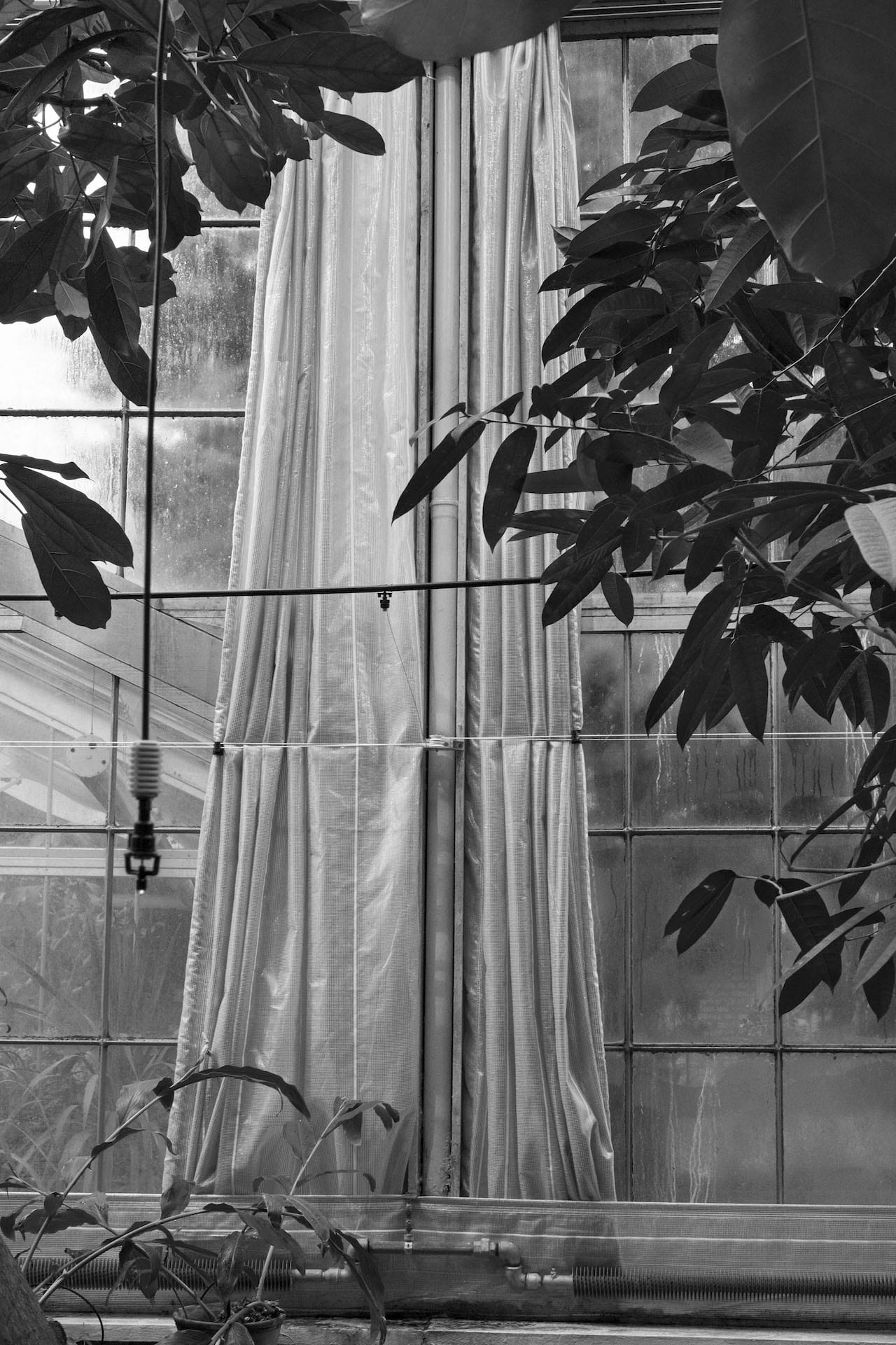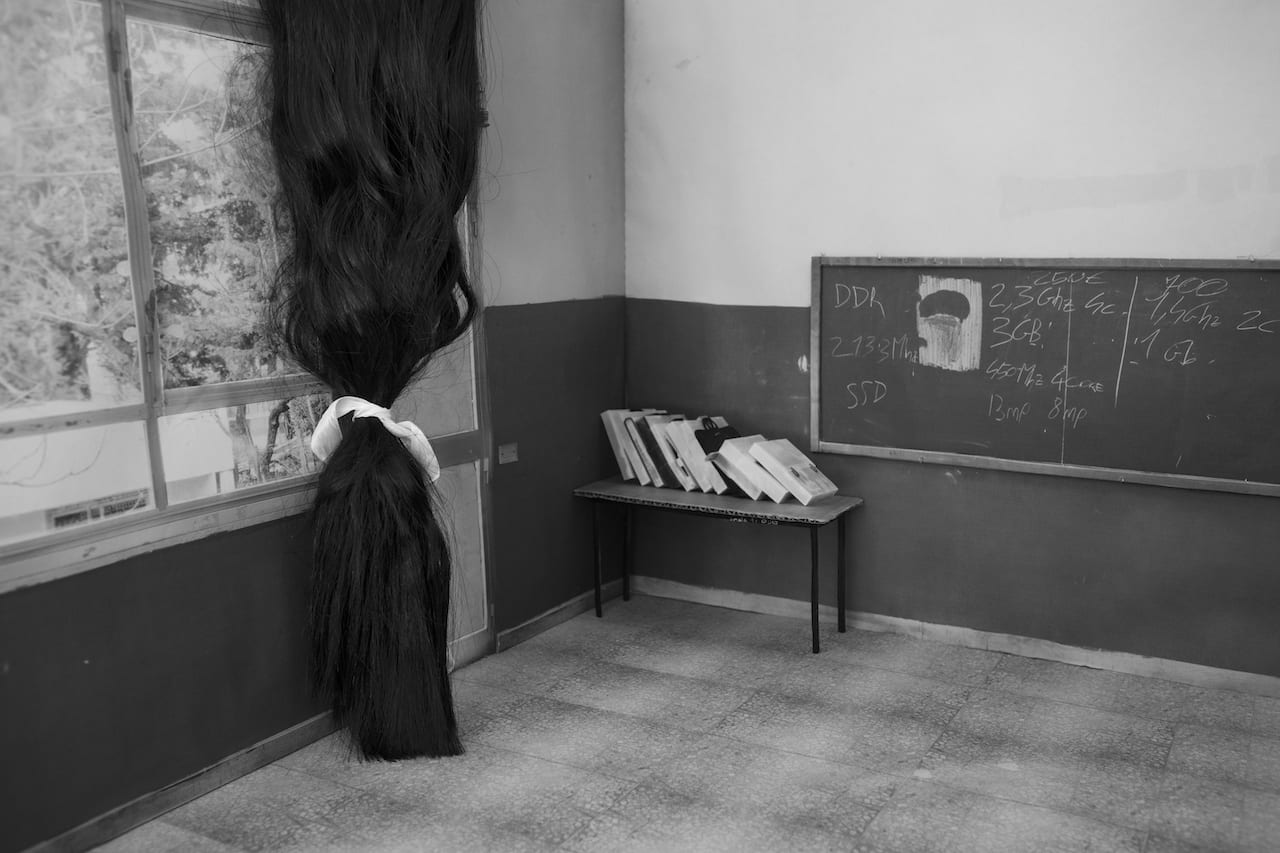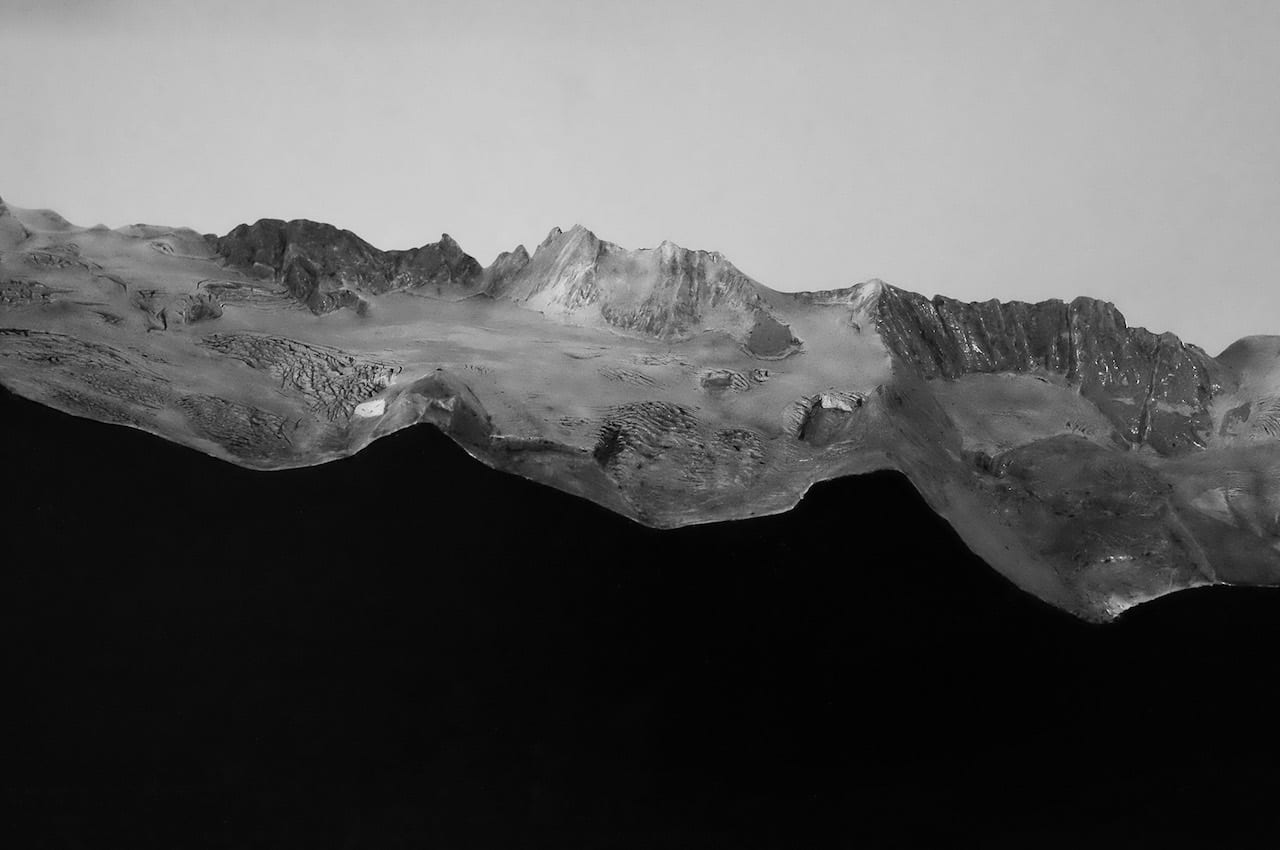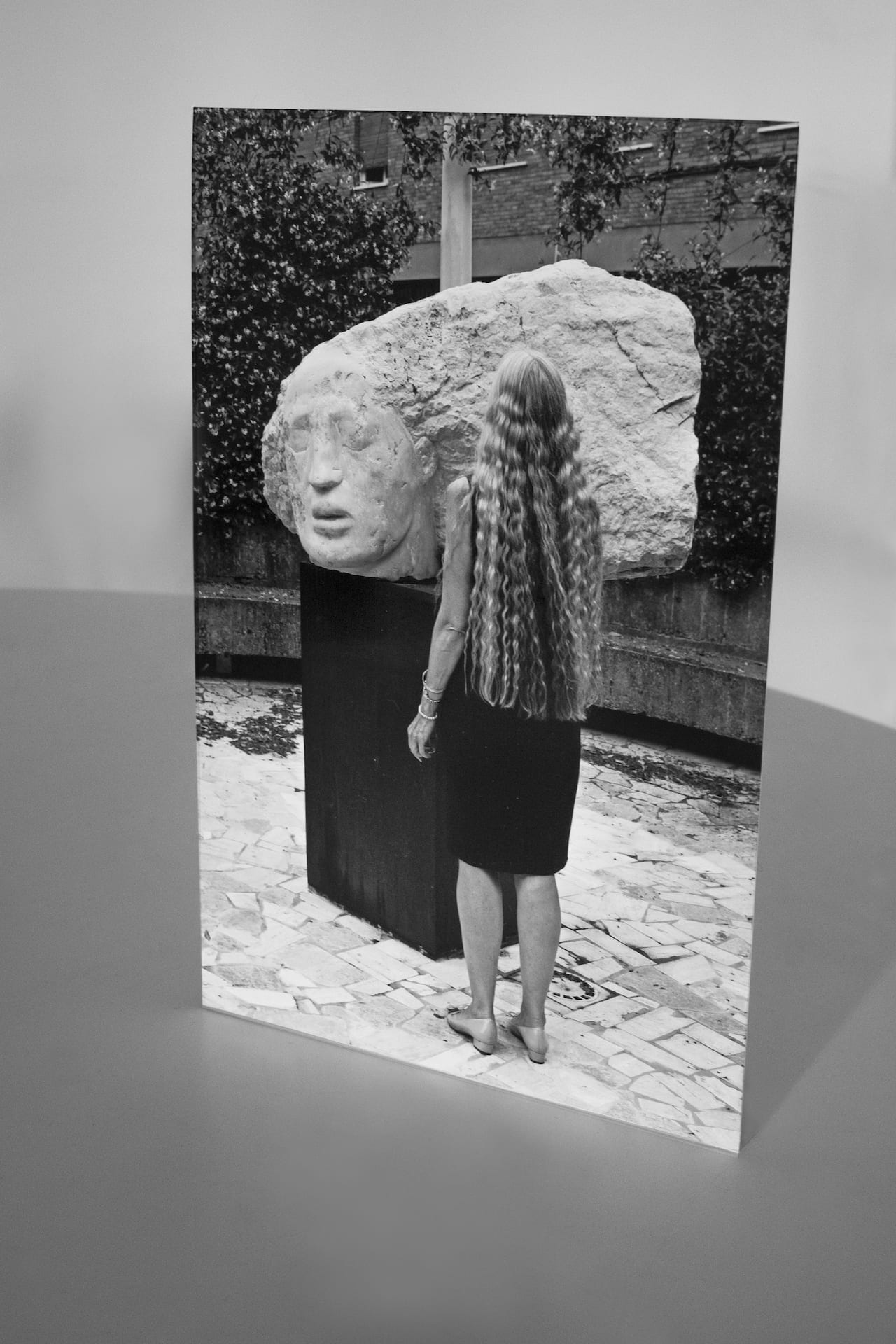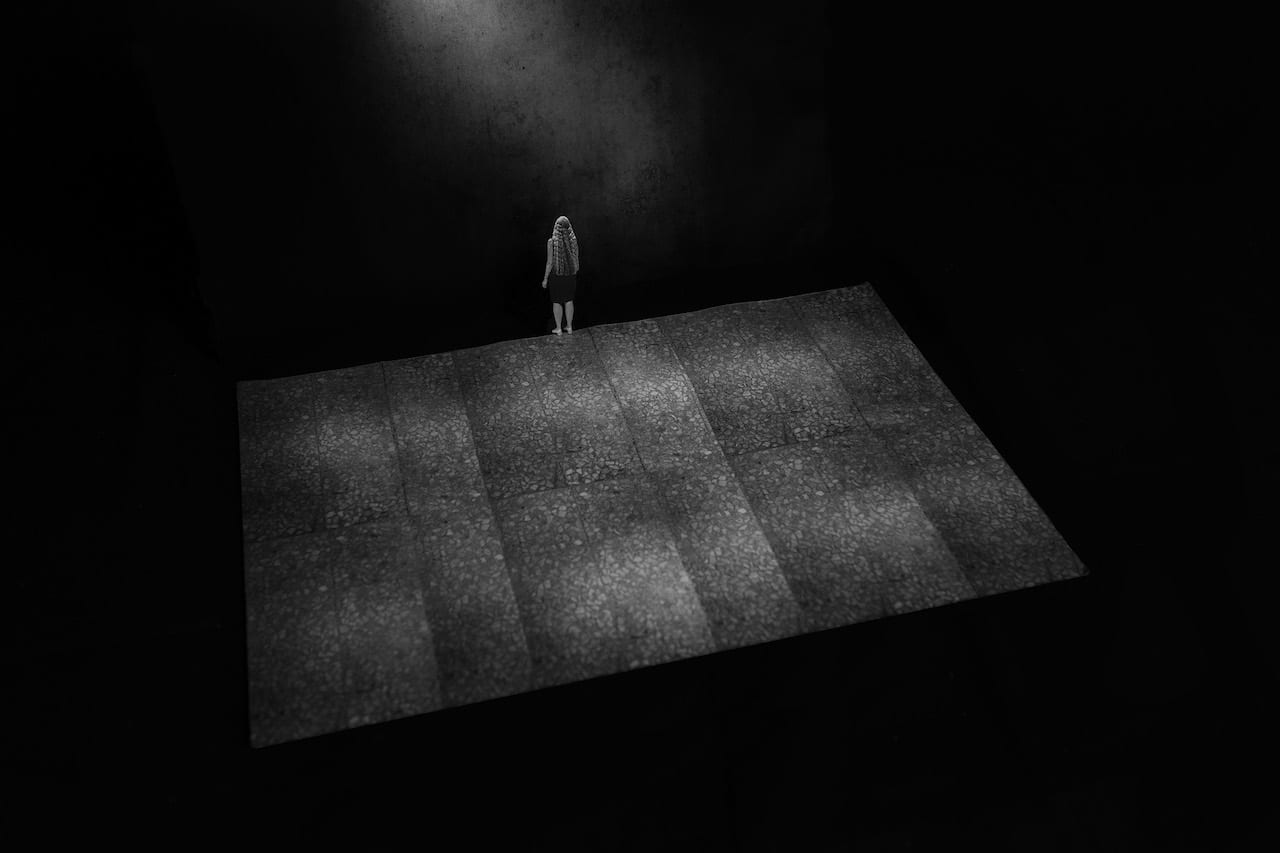Sara Palmieri’s Scenario is the latest instalment of an ongoing photographic experimentation with the nature of the invisible and the mysterious. Her investigations began with M, a work based around family archives depicting her grandmother’s hair. Subsequently Palmieri, who was born in Rome, attended a year-long workshop at the ISSP International Masterclass in Latvia, which was headed by Aaron Schuman, and where she produced La plume plonge a la tête and Scenario.
The projects share a vocabulary of darkness and shadows, with a weighty element of construction: each work produces its own internally functioning visual universe, where everything is significant and no element is left to chance. “I’m interested in the non-visible aspects of reality that I try to represent through a process of time, memories and intuitions, the unconscious and revelations, fragments and recompositions,” Palmieri explains.
These fragments take the shape of heavily symbolic leitmotifs such as draping curtains, dark fronds of leaves or thick locks of hair, which are layered throughout, seeming to overlap and rhyme as the series progresses. With a nod to the visual metaphors employed by Surrealist literature and filmmaker David Lynch, such images are fecund with possible meaning. As an example, Palmieri describes “the relation between hair and death, the lock of hair as a metaphor of attraction and horror at the same time, the hair down as a symbol of passion and eroticism”. These symbols eventually bleed together to form “a new hypothesis of reality”, one grounded in the material function of the image.
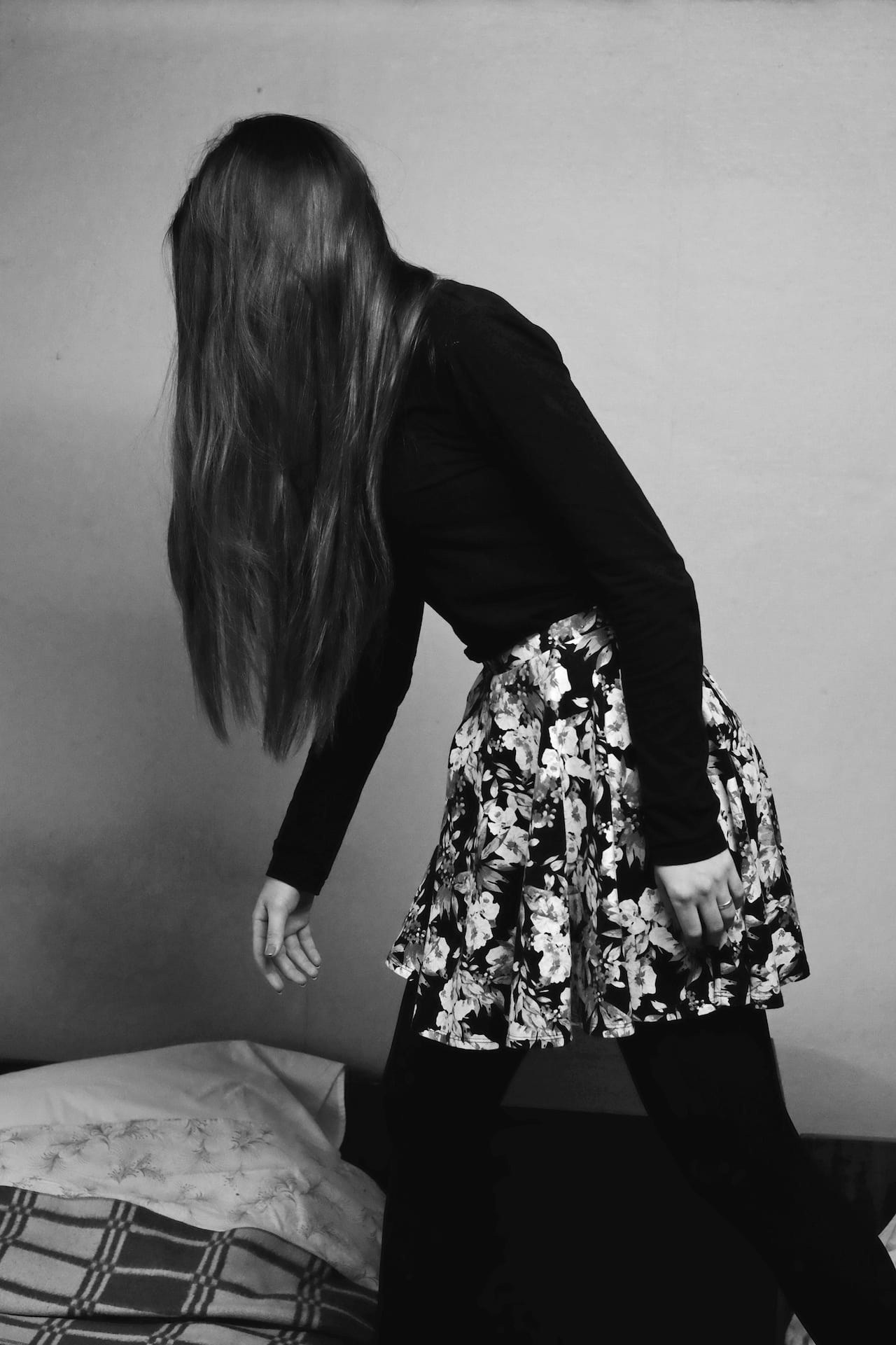
This notion – of the image as object – is a central premise of Scenario. A former architect, Palmieri constructs each image individually, building maquettes and using collage to create oneiric set pieces: a figure stands at the edge of a folded rectangle, looking out onto pure darkness; we see down the crevice between two hulking hills only to realise that our sense of scale has been upended and the hills are made of torn-up paper. “What I suggest to the viewer is not to understand, using reason, but to lose themselves, to lose references,” says Palmieri.
Normal modes of looking and comprehending are cast aside as the viewer steps out onto new terrain, mountainous and imaginary. The work becomes “a territory for an active process where the medium of photography is an instrument to represent reality, but at the same time to reorder and unite the fragments.”
Citing influences such as Breton, Baudelaire and Freud, Palmieri’s themes and provocation of realism – her rattling of its borders – are part of a long tradition. The result is a mode of photographic questioning which challenges the viewer to abandon their assumptions about meaning and leap into a new void of uncertainty. “Scenario is about accepting the chaos, the unseen, the unpredictable; embracing time as a continuous flow and a circle, space as a projection of self,” she says.
